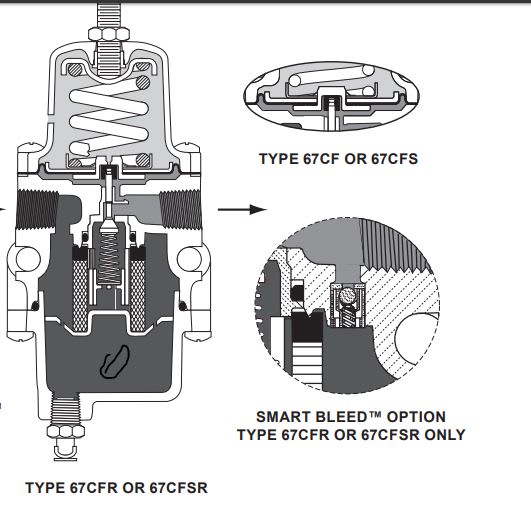Dear All,
i have the following question. i am completely new to regulators. so i am reading the datasheet for 67C regulator and found the following. it has the check valve assembly as being smart bleed option and is activated when the upstream pressure is lost and all air in the output enters to input through this check valve and regulator plug.
1) as far as i understood, this regulator is normally open when there is higher pressure (below the SP)in downstream. suppose the regulator is set to 3 barg. if the downstream pressure is 2 barg under the diagram the regulator will be open. am I right?
2) if the outler(pressure under diagram) reaches 3 barg, the regulator will be closed. am I right?
3) if the inlet pressure is lost, the plug will go down, and the regulator will open. why do i need smart bleed option? to have higher back flow Cv or?
regards

i have the following question. i am completely new to regulators. so i am reading the datasheet for 67C regulator and found the following. it has the check valve assembly as being smart bleed option and is activated when the upstream pressure is lost and all air in the output enters to input through this check valve and regulator plug.
1) as far as i understood, this regulator is normally open when there is higher pressure (below the SP)in downstream. suppose the regulator is set to 3 barg. if the downstream pressure is 2 barg under the diagram the regulator will be open. am I right?
2) if the outler(pressure under diagram) reaches 3 barg, the regulator will be closed. am I right?
3) if the inlet pressure is lost, the plug will go down, and the regulator will open. why do i need smart bleed option? to have higher back flow Cv or?
regards

